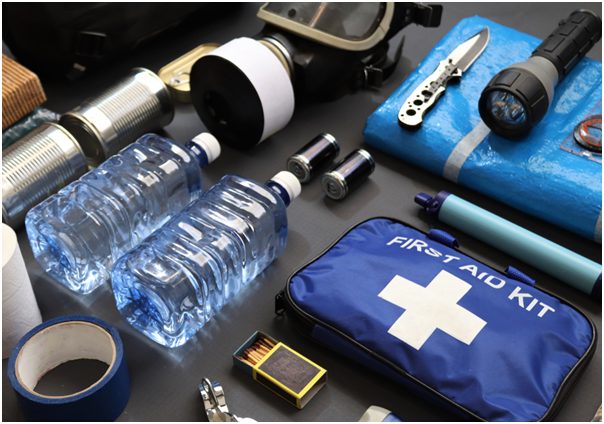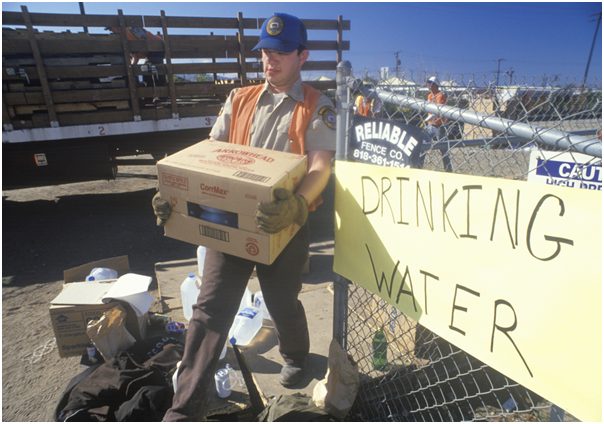The world is ever-changing, as the COVID-19 pandemic has made apparent. But there are other things that we, as a society, need to be aware of and prepare for. In particular, we need to understand the ramifications of natural disasters.
As climate change continues unabated, natural disasters — hurricanes, forest fires, typhoons and more — are expected to get worse. The danger of natural disasters is that they often come without warning. And even if they do, they arrive in a short time, leaving residents with little time to act accordingly.
How can you properly prepare for a natural disaster? What are the specific items you should have ready to go to stay safe at all times? From a bug out kit to medical bracelets, here’s how you and your family can stay safe in the face of a sudden environmental emergency.
Research Your Region
You’re going to need to accrue tools which will allow you to remain safe in the event of a natural disaster. But you can’t properly prepare unless you know what to look for. Complete your first steps of research by looking into common natural disasters in your region, specifically looking up the side effects and dangers bound to come with them.
If you want to stay on top of the news, you should consider bookmarking a Public Service Announcement page to know about the environmental happenings in your area. News could be as benign as finding out the pollen count will be high over the weekend or receiving a high-heat warning, but you can equally remain aware of significant weather events and natural disaster warnings.

Thinking Ahead
Once you have an idea of what’s happening in your region, you’re going to want to think about what basics need to be covered. Considerations should include some of the following:
- Who from your household is going to carry your “bug out” bag? If you don’t know, we’ll cover it shortly.
- What are the essential survival supplies you need to make it safely through a natural disaster?
- Do you and your family have ID bracelets you can use to identify yourselves in the event that something unfortunate happens?
- Do you know how to use the survival supplies you’ll be packing to make it through a natural disaster?
- Do you know where you and your household will meet with one another? Do you even have a planned spot where you can safely check in?
Knowing these essentials will help ensure you can work off a plan. Preparation is key in the face of a natural disaster, as our first response is to freak out. By taking precaution and preparing, you can get a step ahead of whatever comes your way.
What Is a ‘Bug Out’ Kit?
We made note of the topic, and now is the time to cover it: bug out kits.
Bug out kits are the on-the-go kits you keep at the ready in the event of a natural disaster. They are filled with all of the essential survival supplies needed to keep you safe when disaster strikes.
Here are the basics of what essentials you’ll need to include in your bug out kit:
- First aid supplies: It’s important that you have first aid supplies included inside of your bug out bag. This will include first aid essentials like wound dressings, antiseptic wipes, disinfectants, bandages, antihistamines, ibuprofen, a splint and more.
- Power devices: In our new-age world, it’s important that you are able to use your smartphone at all times. To be without a charge means potentially being without a map, family contact, local news updates and more. You should include portable charging stations to guarantee you regularly have a charge. Furthermore, you should always keep a light nearby. This includes battery-powered flashlights, solar-powered flashlights, an electrical lantern and a headlamp.
- Clothing, blankets: You should also store extra clothing inside your bag. This can include rain jackets and rain pants as well as sweaters, an extra pair of pants, numerous pairs of socks and more. It will help you stay safe in the event that there is flooding, heavy rain or sudden snowfall and cold temperatures. Blankets are also a must, no matter the weather, as they can help to keep you mildly dry during poor weather or warm in winter events.
- Shelter: You’ll also need to ensure you have shelter stored away inside your bag. No need to overdo it, either. Basic shelter could include a packable tent, a travel pillow, thin blankets and an easy-to-compress sleeping bag. Also, make sure to have a reliable tarp stored inside your bag, too. It will help protect you against rainfall, most of all.
- Food: You never know what a natural disaster will do to the food in your area. If restaurants, grocery stores and markets are harmed, you’re going to be out of food for some time. You should have dried and canned food inside your bug out bag to guarantee you have calories when need be. Think of items like dehydrated fruit, canned beans, protein bars and more.
- Water: The human body can only live three days without water. While you might feel compelled to stock up on bottled water, your bag is sure to get heavy quickly. It’s a good idea to store a few bottles of clean water in your bag, but you should also include a portable water purifying device.
- Additional tools: Alongside all the other basics, you’re going to want to carry tools to protect yourself and cover all other needs — cooking, protection and more. Items include knives, an axe, wooden spoons, a small skillet and an extendable shovel.

Use Your Resources
Lastly, you should make sure that you have resources to stay up to date on the things going on in your area. These can keep you informed before any disasters happen or in the event that something does. The most reliable for staying up to date is the CDC Public Service Announcements page.
If you need additional resources to better understand what essentials you need, consult a database like the Strategic National Stockpile.






